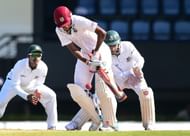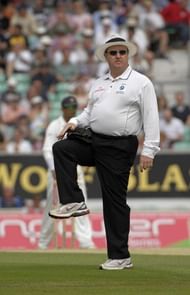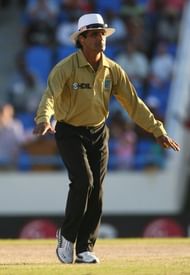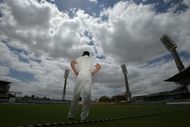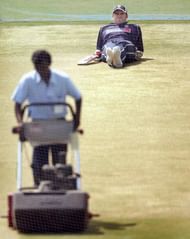Cricket is probably one of the most straightforward games. However, if one digs deep into the MCC law book, there are more than just a handful of peculiarities. Here are a few of the most interesting ones:
LBW, Bat-Pad, Pad-Bat
When these rules are read together, it has the potential to leave one in splits or bewilderment. The basic rules of LBW are obviously clear to one and all. The rule of LBW is a means to make sure that a ball headed for the stumps is not stopped by any part of the body.
But then, if the ball hits the bat first and the pad later and the ball is still headed to the stumps, why is it declared not-out?
While we leave that as some food for thought, there are even more peculiarities with respect to the bat and pad. Remember that in the gullies and mohallahs of your childhood, pad-bat was not adjudged out as caught?
Well, if you played with that rule, you were probably doing it wrong. Indeed, in the international arena, pad-bat is adjudged as out caught. The ball is not dead once it strikes the pad.
There is even more. If the ball pitches outside the line of leg-stump and it is still hitting the stumps, it is declared not-out. If the impact is outside the off-stump line and the ball is going on to hit the stumps, it is still not out.
However, if the impact is outside the line of the off stump and you don’t offer a shot, it is now out if the ball is going on to hit the stump. However, if you don’t offer a shot to a ball pitches outside leg stump, it is not adjudged as out.
Also, if the bowler is Shane Warne, it is out as soon as he appeals/pleads/demands/stares. Need a breather, anyone?
The Dead-Ball and Leg-Byes rule
Ever wondered why it is not out as caught when the ball sometimes finds a way to get stuck in the batsman’s pads? Well, Rule 23 of the MCC comes to the rescue in this case. The rule states that though the ball never came in contact with the ground, the ball is dead as soon as ‘it becomes trapped between the bat and person of a batsman or between items of his clothing or equipment.’
Another interesting rule related to the dead ball is that if the batsman does not offer a shot and the ball ricochets from any part of his body, he cannot take a run off that delivery unless:
“(i) attempted to play the ball with his bat
or (ii) tried to avoid being hit by the ball.”
This means that a batsman can take a run only if he was either attempting a shot or taking evasive action. If he was merely shouldering arms to the delivery, the runs will not be added to the scoring book.
However, this is only if the ball comes in contact with the body. If the batsman offers no shot and the keeper fumbles, a bye can be stolen even if evasive action weren’t being taken.
And you thought the rules were easy?
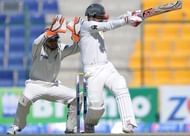
Leg Byes – II
This is one of the most interesting rules I have personally ever come across. Imagine a situation (some people swear to have watched this happen in a county game) where the ball hits the helmet when the batsman is taking evasive action (we just discussed it is counted as runs) and the ball flies all the way to the third man or fine leg boundary without bouncing in the field of play, it is declared as four leg byes and not a six!
Indeed, this peculiar rule ensures that even a ball that goes out of the boundary ropes directly will not be signalled as a six if no shot is offered. Not only leg byes, a ‘boundary six’ cannot be scored in Byes, Wides or No balls even. It can be scored only and only off the bat.
Quoting rule 19.5 ©, A Boundary 6 will be scored if and only if the ball has been struck by the bat and pitches beyond the boundary.
Unbelievable? Read the whole rule here.
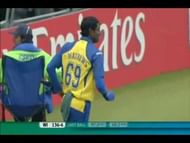
Catching and the Ropes
A stunning display of acrobatics by Angelo Mathews a few years earlier prompted yet another rule change in cricket.
The rules at the time of the incident were read as under:
“A boundary shall be scored and signalled by the umpire at the bowler's end whenever, while the ball is in play, in his opinion - a fielder, with some part of his person in contact with the ball, touches the boundary or has some part of his person grounded beyond the boundary.”
Though the effort was lauded by the MCC committee back then, the rule was still changed later that year.
The current rule reads as follows:
The first contact with the ball is by a fielder, not touching or grounded beyond the boundary, who has some part of his person grounded within the boundary or whose final contact with the ground before touching the ball was entirely within the boundary.
The interpretation of the change in rule is that the last contact with the ball has to be inside the ropes. If the jump is made from outside the boundary ropes and though the player is not grounded outside the ropes but jumps from beyond, it is still declared to have ‘crossed the ropes for a boundary’.
Are we having fun yet?
Dead Ball – II
This is another rather strange to digest rule. Suppose 1-2 runs are needed off the last ball of a match. The batsman on strike hits the ball directed for a boundary. But they complete the first run before the ball crosses the boundary. In this case, only a solitary run will be awarded to the batsman and not a boundary even if the ball eventually crosses the ropes.
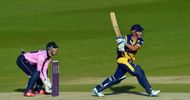
Wides and No-Balls
The wide is another rule that works on the judgement of the umpire. We may see lines that act as guidelines for the umpires on deciding whether a particular delivery is legitimate or not. However, contrary to popular belief, they are not strictly to be followed.
As an example, if a batsman shuffles and takes guard on his off stump, the wide (an imaginary line) shifts from it’s usual position and moves further away from the batsman. But this is not the case if the batsman shuffles after the delivery has left the bowlers’ hand. In this case, the original line shall continue to act as the guideline.
Speaking of reverse sweeps and switch hits, there is one major difference between the two is that in case of a reverse sweep, the wide guidelines remain unaltered. This means that if the delivery will be called wide only if it is a wide in the normal course of action.
However, in case of a switch hit, both the wide lines now become ‘off wides’. This means that even if the ball is sprayed down the (original) leg side but it is within the ‘off-wide’ line, it shall be a legitimate delivery.
Similarly, speaking of no-balls, we often tend to think that a ball is not a no-ball for height if the batsman is outside the crease. The rule, though correct at a time has been altered since and according to the current rules, the ‘point of impact’ has to be considered. This means that regardless of where the batsman is standing when he plays the ball, if it is over the waist is shall be called as a no-ball for height.
Fielding restrictions
Reckon that in the longest format of the game, there are no fielding restrictions at all? Well, there is only a solitary restriction in field placements for test cricket.
Following the controversial bodyline series when Jardine directed his English bowlers to bowl at the bodies of Don Bradman’s side, a new rule was established that only 2 fielders can be stationed between the 90 degrees anticlockwise from square leg.
This basically ensured that such tactics of fielding the whole side at catching positions behind leg and hurtling body breaking deliveries do not become the norm in Test cricket.
The Lawnmower story
Aakash Chopra, with his oodles of experience and flair, had the following incident to share from a domestic game:
(excerpt)
“Take for instance, the rule of mowing the grass on the pitch before the start of play, every single day. Obviously, this rule works well on pitches with a decent covering of grass. Believe it or not though, the pitch that doesn't boast of even a strand of grass is mowed too, every single day.
“In such cases, the blade is set a little high so that it doesn't touch the surface at all, for the blade can damage the grass-less pitch. Nobody seems to be too bothered about asking: what is there to be mowed? What is the purpose of this mowing? Why waste manpower, energy and time indulging in such a senseless act?”
This one, indeed, defies all logic possibly known to man.
Have a hypothetical/real rule related question relating to the game? Ask away in the comments section below and we answer them.
Looking for fast live cricket scores? Download CricRocket and get fast score updates, top-notch commentary in-depth match stats & much more! 🚀☄️
